- Home
- Michael Chabon
Kingdom of Olives and Ash: Writers Confront the Occupation Page 22
Kingdom of Olives and Ash: Writers Confront the Occupation Read online
Page 22
(Translated from the Spanish by John King)
Playing for Palestine
Assaf Gavron
In a 2009 TV commercial for the Israeli cell phone carrier Cellcom, a jeep drives alongside a gray concrete wall, which looks exactly like the separation barrier between Israel and the West Bank. Suddenly something lands on the hood of the car. The soldiers jump out of the jeep in alarm, but then one of them reassures the others, “It’s just a soccer ball.” The commanding officer orders a soldier to return it, and the soldier kicks it over the thirty-foot-high cement wall. A few seconds later it arcs right back over, and this time the soldiers shout, “Come on guys, game on!” The feel-good melody swelling beneath their voices has soothed their tension.
“And everything is sweet and cool!” the singer tells us, to make sure we get it. Again and again the soldiers kick the ball to the other side of the wall, and it comes back. In the end, a narrator announces, “What does everyone want, after all? Just a little fun!”
A few days after Cellcom’s commercial first aired, Palestinians from Bil’in decided to examine the scenario it depicts and what it might look like in the real world. In their video, the same beachy, acoustic soundtrack plays, Palestinians juggle a soccer ball and then kick it over the fence. In return, the Israeli soldiers shoot tear gas. The clip ends with a close-up of the ball, stuck in the barbed wire.
It is easy to analyze how Cellcom’s commercial reflects the desires, conscious or not, of Cellcom’s customers: all we want is to have a little fun, to play a little game, but we don’t want to see the faces of what might actually be happening on the other side of the proverbial pitch. We want it behind a wall of protection.
You might wonder how a large company could be so tone deaf. I’ve certainly wondered, and I think the answer lies in soccer. Cellcom would not normally have dared to step into the political minefield of the West Bank crisis, but soccer defuses the mine, because everyone loves to play. The game is the pure representation of freedom, fun, and community, the most popular sport on earth, one which everyone loves, no matter one’s race or religion. However, the Palestinians in their video force us to confront a different side of the story: everyone loves to play, but not everyone can.
If the conflict in Israel and Palestine is the summertime pickup game that Cellcom suggests it is, then who is winning, and who writes the rules? The stories of the soccer players themselves shed light on these questions. Sameh Maraabah, a rising star in Palestinian soccer who led his team to second place in the West Bank league last year, is one player who has learned how fickle success can be in the profession he might have once thought of as a “sport.”
On April 28, 2014, when Maraabah tried to cross the border from Jordan to the West Bank on the way back from training camp with his Palestinian teammates, he was arrested by Israeli authorities. According to Shabak, the Israeli security services, when Maraabah was in Doha, Qatar, the location of the training camp, he met a man called Talal Sharim, a former Hamas member turned Israeli prisoner, who had been released in the Gilad Shalit prisoner swap. Shabak alleges that Sharim gave Maraabah “money, a cell phone, and written messages” to deliver to a man whom Israeli newspapers called “a senior Hamas activist.” Limor Livnat, then Israel’s minister of culture and sport, sent a letter to international soccer’s governing body, FIFA, decrying the exploitation of soccer for terrorism, and Maraabah was sent to jail in the Nablus region for eight months.
Immediately after his release, in January 2015, Maraabah was invited to join the Palestinian national team on its trip to the Asian Football Confederation Cup in Australia. At the Allenby Bridge border with Jordan, he was arrested again. After being held for five hours, he was sent back to Qalqilya while his team went on to lose all three of the games it played.
Maraabah’s next trip was to Malaysia, that June, for a World Cup qualifier. As if for the sake of routine, he was stopped at the Allenby Bridge. This time the rest of the players protested, organizing a spur-of-the-moment sit-in at the border crossing, announcing they would not move until Maraabah was allowed to pass. Meanwhile, officials from the Palestinian Football Association contacted FIFA and asked for help. Eventually Israel issued a permit for Maraabah to cross, and he scored two goals in his team’s 6–0 victory over Malaysia in Kuala Lumpur.
To be sure, Maraabah is far from the first athlete to have his life upended by Israeli authorities, nor is his example the most egregious; rather, it’s alarming because of how typical it is, an occupation story in a nutshell. The West Bank is filled with such nutshells—wherever you turn you will crack one beneath your shoe.
Arrests of youth and adult soccer players in Palestine are so common that they don’t even make the news. The players are usually accused of stone throwing, and are often held for up to eight months before they are released. Husam Karakre, a sixteen-year-old player from al-Bireh, is still in detention at the time of this writing. Soldiers broke into his family’s home one night and arrested him for allegedly throwing stones at IDF vehicles. Six players from one team, Beit Umar, were arrested last year, and the team was relegated to a lower division at the end of the season. Then there’s the story of three players, Muhammad Qweis from the Mount of Olives in East Jerusalem, Sami al-Daur, who lives in the town of Samu’a near Hebron, and Fadi a-Sahrif from Gaza, and their border troubles. A-Sharif, who played for Hilal Gaza, was injured in a game and was granted a permit for knee ligament surgery in a hospital in East Jerusalem. His friend al-Daur, originally from Gaza, asked a-Sharif to bring him his laptop computer, and coordinated with Qweis, who had dislocated a shoulder and was being treated in the same hospital, to get the laptop to him. The three were arrested and imprisoned for a week, the laptop was scanned thoroughly (nothing suspicious was found), and al-Daur was expelled from Samu’a back to Gaza, losing his place on the team and thus his livelihood.
Mahmoud Sarsak, a player from the south of the Gaza Strip who had signed a two-year contract with a team from the West Bank, was taken by Israeli authorities out of the cab that was driving him from Gaza. He ended up serving three years in jail but was never tried. Only a 101-day-long hunger strike and the intervention of soccer fans and players from around the world (including Celtic FC fans in Scotland and the veteran French soccer players Eric Cantona and Lilian Thuram), the heads of FIFA, and Amnesty International could bring about his release. Interested in asking Sarsak about what happened? You can find him selling falafel in London.
You cannot ask the Palestinian soccer legend Ahid Zakut anything. He was killed in his home by an IDF jet fighter missile during Israel’s “Operation Protective Edge” in 2014. He was a star in the 1980s and 1990s and played on the first-ever Palestinian national team. He coached Riadi Gaza to a championship title, and went on to become a popular sports show presenter on Palestinian TV. He had no relationship with Hamas or connection to politics. But Israel has blurred the lines among politics, soccer, and war, if indeed they ever existed.
Israeli authorities exert power over Palestinians, be they professional soccer players or not. Israel controls not only its own border crossings but also those between Jordan and the West Bank. It also controls the narratives that its domestic media propagates.
Israel’s strategies for marginalizing Palestinian soccer illustrate the fight over the narrative. A Palestinian meets a Palestinian in Qatar. A Palestinian receives money from a Palestinian in Qatar. These facts are undisputed. But what is their meaning—was it a terrorist rendezvous? Is a Hamas member always and only a terrorist? Is a released prisoner (who was released in a deal before finishing his term) necessarily a terrorist? Is a sum of money always meant for terrorist activity, or could it be a donation to a soccer team? Would a terrorist group deliver money, a cell phone, and “written messages” through a soccer player? The Israeli answers to all of the above are yes. The Palestinian answers are no.
Israel’s suspicions are understandable, and at least partly justified. But to throw up our hands and say that there’s
no way to approximate the truth would not just be defeatist but also wrong. I don’t know whether the money was meant for running the Qalqilya soccer club, as the Palestinians claimed, or for Hamas terrorist activity, as the Israelis did, but I tend to believe one story over the other. Why do I believe the Palestinian side? Because over the years I have stepped on many nutshells, many stories, in which Israel exerted too much power and showed too little fairness. A whole life living this conflict has taught me that on the Israeli side the finger is light on the trigger, its power is blinding, and in the name of security, the nation often loses its way.
The Palestinian soccer leagues are not without their rivalries. As in every country, “derby” games between neighboring teams are especially explosive: al-Amari refugee camp versus al-Bireh in the Ramallah region, Tulkarm refugee camp versus Tulkarm city, Silwan versus Hilal al-Quds in Jerusalem, Balata refugee camp versus the Askar refugee camp in Nablus. Yet Palestinian anger over the occupation trumps even these rivalries. Take the case of what, in recent years, has been the most bitter rivalry, the one between Shabab al-Khalil and Shabab al-Thahriyeh. Both are among the strongest teams in the Palestinian league—al-Thahriyeh won the 2015 championship and al-Khalil the 2016. Both teams come from the Hebron area, which, as the home of half of the twelve teams in the first division, is considered Palestine’s soccer city. The derby between al-Khalil and al-Thahriyeh is called the Palestinian El Classico, after the match between the perennial Spanish titans FC Barcelona and Real Madrid. In recent seasons some of the Palestinian El Classicos have ended in blows between the fans in the stands, virtual blows on social media, and damaged cars outside the stadium.
The Palestinian El Classico that took place on October 30, 2015, was different. It was during the wave of violence that swept the region that fall and winter. During the “Knives Intifada,” attacks by young Palestinians, mostly improvised, some lethal, were met with a fierce, mostly lethal response by Israeli security forces and nationalistic vigilantes. Hebron was a hot spot for attacks, and between October 1 and the day of the al-Khalil–al-Thahriyeh derby, more than sixteen locals were killed—almost half of all Palestinians killed in that period. One of the victims, killed exactly two weeks before the game, was the twenty-year-old Basil Sidir, who was known for being Shabab al-Khalil’s number one fan—he appeared at all of the team’s practices and games, leading cheers with a huge drum.
Before the game, both teams released a joint statement, asking all the fans to wear black in solidarity and in mourning and respect for the dead. In addition, the fans were asked to sing pro-Palestinian chants together, instead of their respective teams’ songs. The fans responded with an altercation-free game. When the al-Khalil fans chanted “We will give our soul and blood for al-Aqsa,” al-Thahriyeh’s fans replied “We will give our soul and blood for Palestine.” Shabab al-Khalil won the game 2–1, an important win on the way to the title, but there were very few celebrations. Posters of Basil Sidir were raised by fans in the stands, and his drum was hung high in the air.
The power of soccer to unify, its power to project national pride and national identity—even when those nations are no longer on the map—is an old phenomenon. In the Soviet Union, the most important teams were the team of the people (Spartak), the team of the army (CSKA), and the team of the security services (Dynamo), and to this day fans keep their identities according to this division, many years after those security forces have been dismantled. The Barcelona soccer club in Spain is undoubtedly the leading symbol of Catalan identity and ambition for independence. Perhaps even more prominently, Bilbao Athletic has opted to represent the Basques, allowing only Basque players to play for the team. In Glasgow, Celtic FC is the Catholic team and Rangers FC the Protestant (and in their charged Old Firm derbies you can spot Israeli flags on the Rangers’ side, and Palestinian, as well as Basque, flags waved by Celtic fans, whose religion’s second-class status in England and role in the long battle over Northern Ireland aligns them with independence struggles). In 1990, fan violence in games between Red Star Belgrade and Dynamo Zagreb in the Yugoslavian league was one of the triggers for the civil war that broke out the following year, a war in which mobs of Red Star soccer fans led by a Serbian criminal known as Arkan turned into vicious militias which went on to carry out ethnic cleansing.
In another example of professional soccer pitting the occupied against the occupiers, Algeria in 1958, midway through the war of independence against the French occupation, formed a national team. The National Liberation Front (FLN) recruited supporters among the Algerian community in France, and in a secret operation in April of that year, nine players of Algerian descent who played in the French league (two of whom were also on the French national team) left to join the newly created Algerian team. The defection of those Algerians—residents and citizens of France—to their homeland showed the commitment of the Algerians to independence. Despite FIFA’s refusal to recognize it, the new team played close to eighty international games. At the end of the Algerian War, it became the official national team. Its players were heroes not only to Algerians, but also to a world freeing itself from colonialism—Ho Chi Minh met with them in Vietnam, and Zhou Enlai met with them in China. They were invited to play around the world and became an enduring symbol of the power of sports to resist and highlight political injustice. To this day, young French players with dual citizenship debate which national team to join, even though one of them, France, is among the strongest teams in the world. Still, the other team might be closer to their hearts.
The power of soccer to create a space that could allow the foundation of a new state has not escaped the attention of politicians, including those in Palestine. The Palestinian perhaps most inspired by the FLN’s successes is Jibril Rajoub, who has harnessed the power of soccer to unite a population, even if not to the full satisfaction of his people.
A seasoned politician, Rajoub is more revered for his savvy—and the success it has brought—than for his candor. It’s enough to read a selection of his quotes from recent years to understand why: he speaks in belligerent anti-Israeli rhetoric when inside Palestine, positioning himself as a man of the people; while in speeches and interviews in English—those that primarily reach Israeli and American audiences—he waxes conciliatory about his peaceful aspirations for the end to violence, positioning himself to outsiders as the kind of Palestinian leader who will help stabilize the region. His resume, a virtual history of modern Palestinian resistance, also speaks to his political savvy. Rajoub fought in his youth in the PLO against Israel, took part in armed attacks in the seventies, was sentenced to life in an Israeli jail and released fifteen years later in a prisoner swap, but not before he developed an impressive command of Hebrew and English. When the PLO became the political movement that created the Palestinian Authority in the 1990s, he was there alongside Arafat and filled a number of roles in the newly formed security services. But given soccer’s role in legitimizing marginalized groups and fueling revolutionary impulses, it seems that Rajoub, the chairman of the Palestinian Football Association since 2006, is now in his most influential political position yet. In the decade in which he has worked in sports, possibly the toughest period to date for Palestinians under occupation, Palestinian soccer has achieved its greatest successes. And as always seems to be the case, the breakthroughs are more national than athletic in scope. Though there has been a Palestinian Olympic team since 1996, now the entity of Palestine has become a recognized member of FIFA with its own national team.
When Israel prevented players and coaches from several Arab states from entering the West Bank to take part in the West Asian youth championship, Jibril Rajoub did something brilliant and controversial: he demanded that FIFA suspend Israel’s membership in the organization. Later, after his plea went unanswered, he compiled a list of five demands confronting Israel’s breaches of FIFA’s founding principles: (1.) that Palestinian players and staff and their equipment be granted freedom of movement between Gaza and the West B
ank (FIFA rules forbid the restriction of movement of soccer players because of their nationality); (2.) that football clubs based in settlements be banned from the Israeli league (FIFA rules state that a football association cannot include teams that are based outside the state’s official territory); (3.) that the Israel Football Association fight racism in stadiums; (4.) that Israel issue construction permits for soccer stadiums and grounds in the Palestinian territories; (5.) that taxes and other restrictions on importing soccer equipment to the Palestinian Authority be lifted.
Rajoub did not stop with these statements. He gathered a team of Palestinian and Latin American lawyers to support his demands, and galvanized public opinion in the occupied territories and around the world. After Israel rejected the demands, Rajoub put forward a proposal to expel Israel from FIFA, and a vote was set for May 29, 2015.
In the weeks and days preceding the vote, the story became the center of attention in Israel and beyond: newspaper headlines, op-ed pieces, and current-affairs shows talked soccer and FIFA more than ever before. Israel and Palestine fought to sway FIFA delegates as if they were UN delegates in disguise. The international human rights organization Avaaz published an online petition in favor of Israel’s expulsion that collected sixty thousand signatures, half of them from the Palestinian territories and the other half from all over the world. On the day of the vote, thousands of Palestinians went out on the streets with soccer balls, balloons, and red cards that protestors “issued” to IDF soldiers. The scenes of nonviolent resistance were live-streamed around the world, and they inspired outpourings of support. Palestinian leaders had, it seemed, found a new tack, one that Israel could not resist by crying “security” and calling attention to Palestinian attacks on innocent civilians.

 McSweeney's Mammoth Treasury of Thrilling Tales
McSweeney's Mammoth Treasury of Thrilling Tales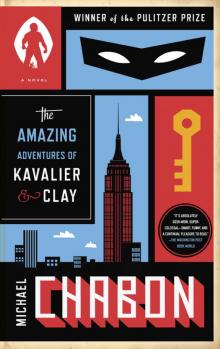 The Amazing Adventures of Kavalier & Clay
The Amazing Adventures of Kavalier & Clay The Yiddish Policemen's Union
The Yiddish Policemen's Union Wonder Boys
Wonder Boys Manhood for Amateurs
Manhood for Amateurs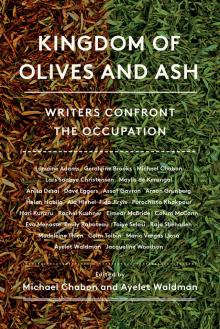 Kingdom of Olives and Ash: Writers Confront the Occupation
Kingdom of Olives and Ash: Writers Confront the Occupation Gentlemen of the Road: A Tale of Adventure
Gentlemen of the Road: A Tale of Adventure A Model World and Other Stories
A Model World and Other Stories Pops: Fatherhood in Pieces
Pops: Fatherhood in Pieces McSweeney's Enchanted Chamber of Astonishing Stories
McSweeney's Enchanted Chamber of Astonishing Stories Summerland
Summerland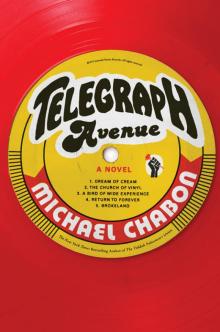 Telegraph Avenue
Telegraph Avenue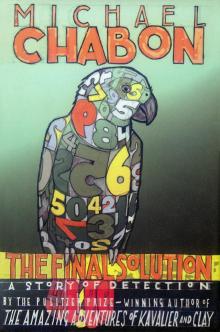 The Final Solution
The Final Solution The Mysteries of Pittsburgh
The Mysteries of Pittsburgh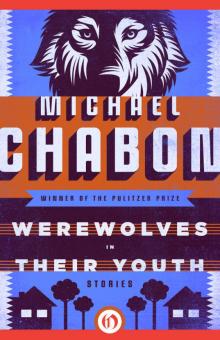 Werewolves in Their Youth
Werewolves in Their Youth Bookends
Bookends Fight of the Century
Fight of the Century Maps and Legends
Maps and Legends The Amazing Adventures of Kavalier & Clay (with bonus content)
The Amazing Adventures of Kavalier & Clay (with bonus content) Kingdom of Olives and Ash
Kingdom of Olives and Ash Pops
Pops Gentlemen of the Road
Gentlemen of the Road The Final Solution: A Story of Detection
The Final Solution: A Story of Detection Telegraph Avenue: A Novel
Telegraph Avenue: A Novel